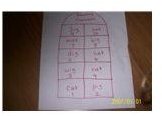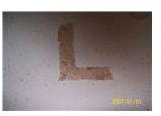Sensational Summer Language Activities for Kindergarten Students
Fun in the Sun…and in the Sand
Beach Activities
If you cannot take your students to the beach, why not bring the beach to your classroom? Have children rotate around the room going to various centers that offer interactive language activities. Allow enough time so that everyone gets a chance to be at each center. Before beginning, read the book, How Will We Get to the Beach, by Brigitte Luciani and Eve Tharlet. Ask your students the questions in the book and take turns answering.
Dig for Gold: Before students arrive, prepare two separate sand tables. Hide a variety of plastics toys in one sand table such as crabs, starfish, coins etc. Make sure that the sand table contains toys that begin with a variety of letters, some with the same. Next, hide gold Easter eggs with letters written inside them (using a black permanent marker) in the second table. Provide plastic shovels and rakes for students to dig. The students will find an egg, open it and say their letter. Then they will move to the next sand table to dig for a toy that begins with the letter they found inside their egg.
**
Sand Letters: Provide students with a large, cut out block letter (the first initial of their name) made from white poster board. Have them spread glue on their letter and sprinkle it with colored or regular sand.
Sunbathe and Read: Lay beach towels and books around the floor to create a beach effect. Make sure to have emergent readers available. Have children take turns reading to each other. Read A Day at the Beach, by Lisa King. This is a good emergent reader for kindergarten students to practice their reading skills. Make sure you apply sunscreen regularly!
Water Play: Have students practice writing on a black chalkboard with water. Dip a paintbrush into water and practice writing letters or words. Children will enjoy pretending they are at the beach with this one!
Fishing For Words
Kids will love fishing for words that will help them to build sentences. Nouns, verbs, and other sentence elements are integral in language development.
Materials:
- Boxes or buckets
- Sticks or thin wooden or plastic dowels
- Yarn
- Colored cardstock paper
- Magnets
- Paperclips
- Black Marker
Make your fishing rods:
Tie the yarn 2 to 3 feet long to the stick.
Attach 2 or 3 fridge magnets to the other end of the string using glue or tape.
Make your paper fish:
Cut the fish out of colored paper after tracing or drawing.
Write a noun, verb, conjunction, or punctuation mark on each cared using a Sharpie or permanent marker.
Attach 1 or 2 paperclips to the mouth of the fish with tape or by punching a hold through it and tying the string.
Test the # of magnets on the fishing rod and # of paperclips on the fish prior to class to make sure students can easily catch the fish.
Set up your fishing stations:
Set up three fishing stations using the boxes or buckets (one for each). Each group of fish words should have one bucket; one that contains fish noun words, fish verb words, fish with small words (articles and conjunctions), and fish with a period, exclamation point, and question mark written on them. The fish can be laminated to make them more sturdy.
The students will go fishing. The teacher will have them catch three fish each from the three different stations. After all three fish are caught, the students will try to make a sentence out of the three words. The teacher will hand students a fish with a punctuation mark to take back to their desk with them and create their sentence.
Optional: If this activity is a bit too hard, just have them fish for one word, say the word, and try to use it in a sentence.
Hopscotch Rhyming Fun

Children have been playing hopscotch for thousands of years. Why not create a language hopscotch game that provides both fun and learning at the same time? The teacher will draw a hopscotch board like the photo. Besides using numbers, the teacher will use words as well for each block, creating two rows of words. The child will have to jump on the word that rhymes with the first one they jumped on. For example, if the starting words are cat and pig, the student would choose either and jump to the next block, either wig or rat - whichever rhymes with their selection. The teacher may want to make several different boards before class begins in order to run this activity more efficiently.
Treasure Hunt Using Sight Words
Sometimes children get tired of reading, or may even dread it. Keep reading exciting with a treasure hunt summer language activity that will have your kindergarteners reading in no time. They will be so focused on finding the prize that they will forget that they are reading entirely.
The teacher will need:
- Gold plastic coins
- Sticky notes
- A treasure box filled with toys and candy
- Red marker
What to do:
The teacher will write clues on the sticky notes using sight words, and stick them to the gold coins. Make sure the words you choose to use are age appropriate for your students. The children will read the clues until they reach the treasure box. It would be a good idea to start inside and work your way outside. Keep it simple.
1. Look under your desk
2. Go to the reading center.
3. The next clue is where you eat lunch.
4. Look under the slide.
4. Look on the swing.
5. Look under the tree.
Once they find the treasure, they may choose a toy or piece of candy from the treasure box.
A Nature Walk of Names
Begin by reading the book, The Clever Stick, by John Lechner. Discuss with students what things they may see in the woods. Have them brainstorm different animals, plants, etc. Tell them they are going on a nature hunt and to make sure and look for the things talked about in the classroom.
Take students on a field trip to the park and go on a nature walk. Have each child try to find things that begin with the first letter of their name. Next have children gather items such as sticks, leaves, and flowers. They can practice writing the names of the items they gathered from their nature walk. Read the book The Curious Garden, by Peter Brown.
Read, Read, Read!
Reading to children every day is the most important thing a person can do to improve a child’s language skills. Besides the activities listed above, have children read to you and their classmates. Sing songs, read poetry, and engage your students in dramatic play. Read a story and have children make up a new ending or have them create their own story using pictures. Provide alphabet macaroni and have them write messages to their friends. You could even put together a summer activities packet.
References
Photos, printable book, and activities are courtesy of Lisa King all rights reserved.
